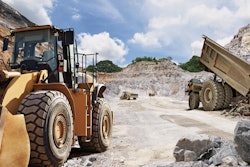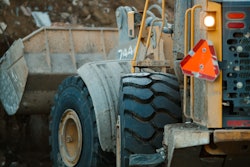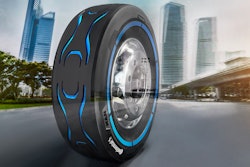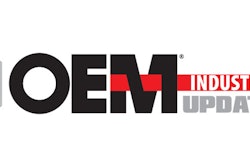
Each year, our State of the Industry issue looks at the top trends and technologies within the heavy equipment industries. We also dig into current and future market conditions, as well as regulations which may currently or in the coming years have an impact on how the industry will go about designing its equipment.
To get the best insights, we speak with executives from a variety of companies working in the industry—everyone from associations, to OEMs to component suppliers. Below are responses provided by Minoo Mehta, President, BKT USA, Inc.
Read all of this year's executive Q&As.
Supply Chain Disruptions
How have supply chain disruptions impacted your business over the past year?
Supply chain disruptions have caused a ripple effect throughout the entire tire industry. With delays in getting containers, delays in ocean transit, port congestions, delays in getting chassis to transport, shortages on ship berth space, labor shortages, and most of all COVID disruptions, all have affected prices and industry-wide tire supply versus demand.
If impacted, what has your company done to try to overcome this industry challenge?
Our company is one of the largest tire exporters from India and most shipping lines have high respect for our business volume. Shipping lines are giving us containers for those ports where the turnaround of containers is fast. However, for North America there is a big struggle even to get containers. The West Coast of the USA is the worst hit where shipping companies won’t give containers to load. On the East Coast ports of the USA, the container availability is also very tight. Conditions of sale by shipping companies are becoming more stringent and penalties are being handed down at every opportunity. Better communication with channel partners has helped us save these additional costs.
At what point do you foresee the current supply chain disruptions becoming less of an issue?
Industry analysts think this may not get much better until the middle of next year, but no one can accurately predict. There are high profits at stake for many industries and countries to keep this going as long as possible and it does seem likely to change in a short span of time.
What industry challenges have these supply chain disruptions brought to light, and what can the industry do to overcome them?
Many issues have been brought to light. Unfortunately, as an industry we can only improve upon what the industry can control. Mainly responsible is our government and the political climate of our country. If our government had been fast to react in mitigating fast developing issues, what we see today could have been in a better light. The major distraction of the COVID pandemic, for which our government was totally unprepared, started this snowball effect and will take a long time to get in control. Swift action was needed by our government to take steps to ease labor shortages in our country, cut down on political divisiveness and shed many differences that plague our beautiful country. We all can [make] individual contributions to improve the situation and living conditions around us.
Ease of regulations are needed to keep the trucking industry moving smoothly. We are seeing that the shortage of truck drivers to get containers continues to contribute to the inland movement of goods.
With the inbound and outbound movement of goods affected, the timely supply of raw materials for tires has been affected, everything from natural rubber to nylon fabric. This has had a ripple effect on production of tires worldwide, leading to price increases throughout the industry. Poor consumers are always bearing the brunt of these increases.
Even OE manufacturers are severely affected due to timely required supply of parts including tires. At this point, distributors are trying to source tires from anywhere they can to have products to sell.
Our industry must make strong representations with the Government and try to block interested lobbies in getting their way in continuing with their profiting.
Challenges & Opportunities
What are the biggest challenges facing the industry currently, or do you see the industry facing in the coming years?
The biggest challenge facing the tire industry is to survive the likely losses from COVID-19 impacts. Industry must take steps to ensure that it stays lean and mean during this period.
The distribution side of the tire Industry must find a way to mitigate through labor shortages including truck driver shortages to keep their operations working smoothly. Meticulous planning and proper execution will help with some problems faced.
The manufacturing side of the tire industry must meet the challenges to keep the production flow running smoothly by resolving problems that deter production.
The tire industry associations need to take it up strongly with the Government to bring in industry-friendly regulations that help build the industry.
We are aware that the problems are very complex and inter-twined and there are no easy answers or fixes. However, letting the matters drift will further compound the issues.
What are some of the biggest opportunities you see in the industry?
As the logistical problems subside, there will be opportunities to develop new products and improve current products to meet the needs of the future.
With the increase in world population going up at the rate of 9 babies born every 2 seconds, the need for food and resources will continue to grow every year. To meet the challenges of meeting the needs of the ever-growing population, new technology and equipment will evolve. Tire sizes, development, and requirements will change. Hybrid, electric, and autonomous vehicles will be more prevalent and will require different or advanced technology for tires.
There is always room for growth for quality products and technologies. On the agriculture side, tractors, implements, and the accompanying equipment will continue to get larger to cover more land in a pass. As the weight and the load capacities increase, we must stay ahead of the curve to supply quality products that will withstand the additional stress on the tires.




















